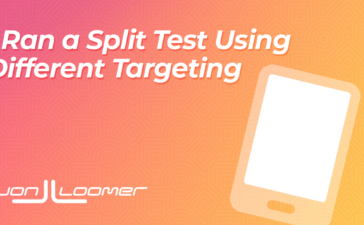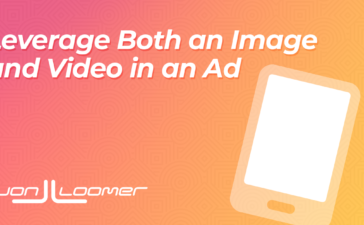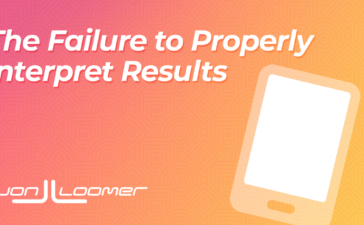One of the challenges resulting from audience expansion and algorithmic targeting is the lack of visibility into who sees our ads. When the advertiser loses control over defining the target audience, how can we trust that our ads are shown to the right people?
Audience Segments can help.
Let’s take a closer look at this incredibly valuable tool…
What Are They?
When running Advantage+ Shopping Campaigns, advertisers have very little impact on who sees their ads.
When using Advantage+ Audience, most targeting inputs are used as audience suggestions only.
Even when using original audiences, an advertiser’s targeting inputs are often expanded — either manually or automatically.
The resultant mystery about who sees your ads can be frustrating. A benefit of Audience Segments is that advertisers can get visibility into how budget and performance are distributed between important groups.
Audience Segments allow advertisers to define people who are connected to their business:
- Engaged Audience: People who have interacted with your business but have not made a purchase
- Existing Customers: People who have bought a product or signed up for your services
Anyone who falls outside of these groups will be considered a New Audience. You will then be able to see how much of your budget was spent on each group — as well as how performance varied between them.
Audience Segments were first made available for Advantage+ Shopping Campaigns. In the beginning, advertisers were only able to define Existing Customers. Not only did this allow them to view breakdowns of results by customers and non-customers, but it could be used to set an Existing Customer Budget Cap for those campaigns.
The Engaged Audience segment would soon follow. Meta eventually rolled out Audience Segments for all sales campaigns — whether manual or Advantage+ Shopping. While it doesn’t allow for an Existing Customer Budget Cap on manual campaigns, these Audience Segments are enormously useful for reporting.
NOTE: You’ll know that you can leverage Audience Segments for manual Sales campaigns if you see this reporting section when creating a campaign.
Define Them
You won’t be able to leverage Audience Segments until you define them. To define your your Audience Segments, go to Advertising Settings in the All Tools menu. You may need to go to Ad Account Settings first.
Click the section for Audience Segments.
It will look like this…
1. Define Engaged Audience.
If you haven’t yet defined your Engaged Audience, expand this section and it will look like this…
You can select from existing custom audiences or create new custom audiences to define this group. You’ll want to use every method possible to help define people who have engaged with you. That includes Website, Customer List, App Activity, Offline Activity, Catalog, Lead Form, and Shopping.
Note that this will not include certain types of custom audiences like Page Engagement, Instagram Account Engagement, and Video View Engagement.
There will be overlap — not only between custom audiences within Engaged Audience, but between your Engaged Audience and Existing Customers. Do not worry about excluding people to prevent that overlap. People will only be counted once. If someone is shown your ad who exists in both the Engaged Audience and Existing Customers, they will only be counted as an Existing Customer.
Define this Audience Segment as throughly as possible. Here’s what mine looks like…
2. Define Existing Customers.
If you haven’t defined your Existing Customers, expand it and it will look like this…
You will want to define this based on people who have bought from you. There is a bit of confusion in Meta’s definition since it also includes “people signed up for your services.” I do not interpret that as being anyone who is on your email list (these people would be part of your Engaged Audience). A purchase needs to be made.
The most common ways to define this will be a segmented customer list of people who have made a purchase. I’ve created several Customer List Custom Audiences based on specific purchases as well as one that captures all purchases. I also use a Website Custom Audience based on the Purchase standard event that fired during the past 180 days.
Here’s what my Existing Customers Audience Segment looks like…
Depending on your business, you could certainly use Shopping, App Activity, Offline Activity, and and Catalog Custom Audiences, too.
Leverage with Breakdowns
Once your Audience Segments have been defined, you can leverage them for Ads Manager breakdowns going forward. How long will it take until it’s available? It could be as quick as a few minutes, or it could take longer.
Then click the Breakdowns dropdown menu in Ads Manager (between Columns and Reports).
You will have two different breakdowns that you can use.
1. Breakdown by Audience Segments.
This is found under “By Demographics.” When your Audience Segments are defined, your results will be broken down to include three separate rows:
- Engaged Audience
- Existing Customers
- New Audience
Here’s an example…
You may also see Uncategorized or Unknown. “Uncategorized” will appear when viewing campaigns that don’t qualify (not a Sales campaign). Keep in mind that not everyone has this for manual Sales campaigns.
“Unknown” may reflect that ads were delivered to people while your Audience Segments weren’t yet defined. I’ve also seen some results for Unknown temporarily before they eventually move to one of the two Audience Segments.
2. Breakdown by Country and Audience Segments.
This is found under “By Geography.” You will then get breakdowns by Audience Segments for each country where people were shown your ads. Here’s an example…
Examples of How I Use Them
I’ve had lots of fun using Audience Segments with both Advantage+ Shopping Campaigns and manual Sales campaigns. This feature was central to a test I ran to determine how much our audience inputs matter (and how much remarketing happens) when using various targeting approaches.
1. Advantage+ Audience without Suggestions.
I was curious how much of my budget would be spent on remarketing without providing any suggestions at all. It was a lot!
2. Advantage+ Audience with Suggestions.
If that much remarketing happens without providing suggestions, what happens when I provide suggestions that match my Audience Segments exactly? Maybe surprisingly, the distribution was virtually unchanged.
3. Original Audiences Using Custom Audiences with Advantage Custom Audience Turned On.
If I use Original Audiences, would Meta respect my inputs more before going broader? Once again, the custom audiences I used matched my Audience Segments. Distribution was again about the same.
4. Original Audiences Going Broad.
What about using Original Audiences and going broad? Well, still lots of remarketing!
5. Advantage+ Shopping Campaign Optimizing for a Complete Registration.
And finally, I created an Advantage+ Shopping Campaign that optimizes for the Complete Registration event to be consistent with what I did in the other four tests. So far, this is looking a lot like Advantage+ Audience without suggestions.
Here are my main takeaways from these tests:
1. Algorithmic targeting and audience expansion do indeed result in remarketing. This is a good thing!
2. It is unclear how much our targeting inputs matter when audience expansion and algorithmic targeting are at play. The distribution of my budget and results were all within a similar range for each approach.
Feel free to use Audience Segments for your own tests!
Your Turn
Have you started using Audience Segments? What have you learned from using them?
Let me know in the comments below!






























